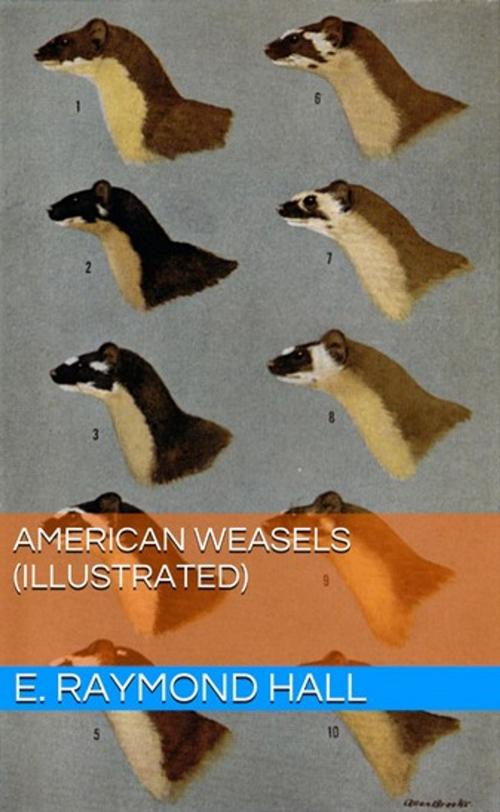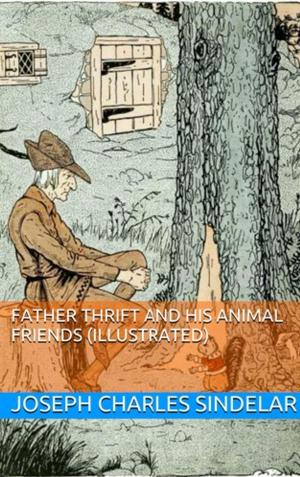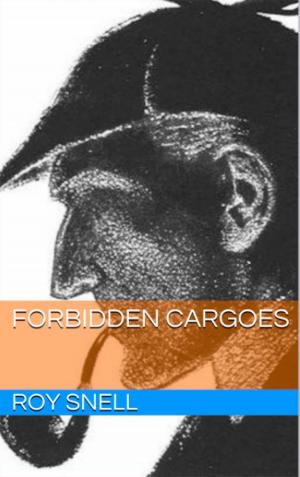American Weasels (Illustrated)
Nonfiction, Science & Nature, Nature, Animals, Animals Rights, Wildlife| Author: | E. Raymond Hall | ISBN: | 1230000154043 |
| Publisher: | Lost Leaf Publications | Publication: | July 23, 2013 |
| Imprint: | Language: | English |
| Author: | E. Raymond Hall |
| ISBN: | 1230000154043 |
| Publisher: | Lost Leaf Publications |
| Publication: | July 23, 2013 |
| Imprint: | |
| Language: | English |
Introduction
The weasel's agility and speed take it in and out of retreats, over obstacles and across open places in amazingly rapid fashion and are responsible for the animal's actions being described as "quick as a flash." The common long-tailed weasel of the United States measures approximately a foot and a half in length, of which the tail comprises a third; but the round, slender body is scarcely more than an inch and a half in diameter. Brown above and whitish below in summer dress, the animal is sleek as well as lithe and graceful. It is easy to understand, therefore, why the Bavarian name Schönthierlein (pretty little creature) and the Italian name donnola (little lady) were bestowed upon it. The Spanish name is comadreja (godmother).
In the winter, in temperate and northern regions, the coat becomes pure white except for the black tail-tip. In this dress the correct name for the animal is ermine, a mammal whose fur is known to all and justly esteemed, especially for its luster in artificial light, where it is scarcely excelled in enhancing the beauty of gems and their feminine wearers.
In relation to its weight, the weasel is thought to be unsurpassed, and perhaps it is unequalled among mammals, in the effectiveness with which it exercises its carnivorous heritage; it kills with speed and strength a wide variety of animals including many much larger than itself; and it has been known to attack even man himself when he stood between the weasel and its intended prey. In structure and temperament it is so highly specialized for offense that, when opportunity affords, it sometimes kills, for storage in its larder, far more than enough to meet its immediate needs. After speaking of this tendency, Elliott Coues (1877:129) has said:
[8]
"A glance at the physiognomy of the weasels would suffice to betray their character. The teeth are almost of the highest known raptorial character; the jaws are worked by enormous masses of muscles covering all the side of the skull. The forehead is low and the nose is sharp; the eyes are small, penetrating, cunning, and glitter with an angry green light. There is something peculiar, moreover, in the way that this fierce face surmounts a body extraordinarily wiry, lithe, and muscular. It ends in a remarkable long and slender neck in such a way that it may be held at right angle with the axis of the latter. When the creature is glancing around, with the neck stretched up, and flat triangular head bent forward, swaying from one side to the other, we catch the likeness in a moment—it is the image of a serpent." Although Coues' colorful description more closely links the weasel with the symbol of evil than pleases me, his description does emphasize the raptorial character of the weasel.
Even though most weasels are intractable as pets, they have a value to man, as, for instance, when he is plagued by mice. In a field where mice rodents thereabouts are almost exterminated in an area two or three hundred yards across; in this way the weasel acts as a control, locally, as and other small rodents are so abundant as to damage cultivated crops, the weasel is the farmer's best friend. A weasel may inhabit one den until the well as a check more widely, on the increase in size of populations of kinds of rodents upon which it preys.
Contents:
Introduction 7
Paleontological History 10
Skeleton and Dentition 12
Disparity in Numbers of Males and Females 19
Materials, Acknowledgments and Methods 21
Variation 24
Variation with Age 24
Secondary Sexual Variation 26
Individual Variation 28
Seasonal Variation 30
Variation in Coloration and Molt 30
Variations of Taxonomic Worth 44
Distribution and Speciation 54
History of Classification 69
Chronological List (annotated) of Specific and Subspecific Names Applied to American Weasels 71
Check-List of American Species and Subspecies of the Genus Mustela 81
Introduction
The weasel's agility and speed take it in and out of retreats, over obstacles and across open places in amazingly rapid fashion and are responsible for the animal's actions being described as "quick as a flash." The common long-tailed weasel of the United States measures approximately a foot and a half in length, of which the tail comprises a third; but the round, slender body is scarcely more than an inch and a half in diameter. Brown above and whitish below in summer dress, the animal is sleek as well as lithe and graceful. It is easy to understand, therefore, why the Bavarian name Schönthierlein (pretty little creature) and the Italian name donnola (little lady) were bestowed upon it. The Spanish name is comadreja (godmother).
In the winter, in temperate and northern regions, the coat becomes pure white except for the black tail-tip. In this dress the correct name for the animal is ermine, a mammal whose fur is known to all and justly esteemed, especially for its luster in artificial light, where it is scarcely excelled in enhancing the beauty of gems and their feminine wearers.
In relation to its weight, the weasel is thought to be unsurpassed, and perhaps it is unequalled among mammals, in the effectiveness with which it exercises its carnivorous heritage; it kills with speed and strength a wide variety of animals including many much larger than itself; and it has been known to attack even man himself when he stood between the weasel and its intended prey. In structure and temperament it is so highly specialized for offense that, when opportunity affords, it sometimes kills, for storage in its larder, far more than enough to meet its immediate needs. After speaking of this tendency, Elliott Coues (1877:129) has said:
[8]
"A glance at the physiognomy of the weasels would suffice to betray their character. The teeth are almost of the highest known raptorial character; the jaws are worked by enormous masses of muscles covering all the side of the skull. The forehead is low and the nose is sharp; the eyes are small, penetrating, cunning, and glitter with an angry green light. There is something peculiar, moreover, in the way that this fierce face surmounts a body extraordinarily wiry, lithe, and muscular. It ends in a remarkable long and slender neck in such a way that it may be held at right angle with the axis of the latter. When the creature is glancing around, with the neck stretched up, and flat triangular head bent forward, swaying from one side to the other, we catch the likeness in a moment—it is the image of a serpent." Although Coues' colorful description more closely links the weasel with the symbol of evil than pleases me, his description does emphasize the raptorial character of the weasel.
Even though most weasels are intractable as pets, they have a value to man, as, for instance, when he is plagued by mice. In a field where mice rodents thereabouts are almost exterminated in an area two or three hundred yards across; in this way the weasel acts as a control, locally, as and other small rodents are so abundant as to damage cultivated crops, the weasel is the farmer's best friend. A weasel may inhabit one den until the well as a check more widely, on the increase in size of populations of kinds of rodents upon which it preys.
Contents:
Introduction 7
Paleontological History 10
Skeleton and Dentition 12
Disparity in Numbers of Males and Females 19
Materials, Acknowledgments and Methods 21
Variation 24
Variation with Age 24
Secondary Sexual Variation 26
Individual Variation 28
Seasonal Variation 30
Variation in Coloration and Molt 30
Variations of Taxonomic Worth 44
Distribution and Speciation 54
History of Classification 69
Chronological List (annotated) of Specific and Subspecific Names Applied to American Weasels 71
Check-List of American Species and Subspecies of the Genus Mustela 81















